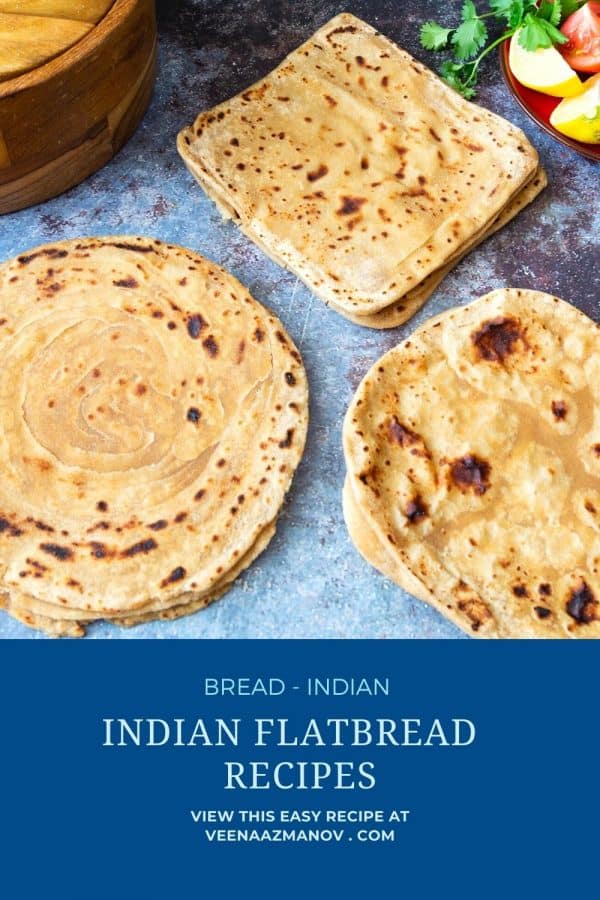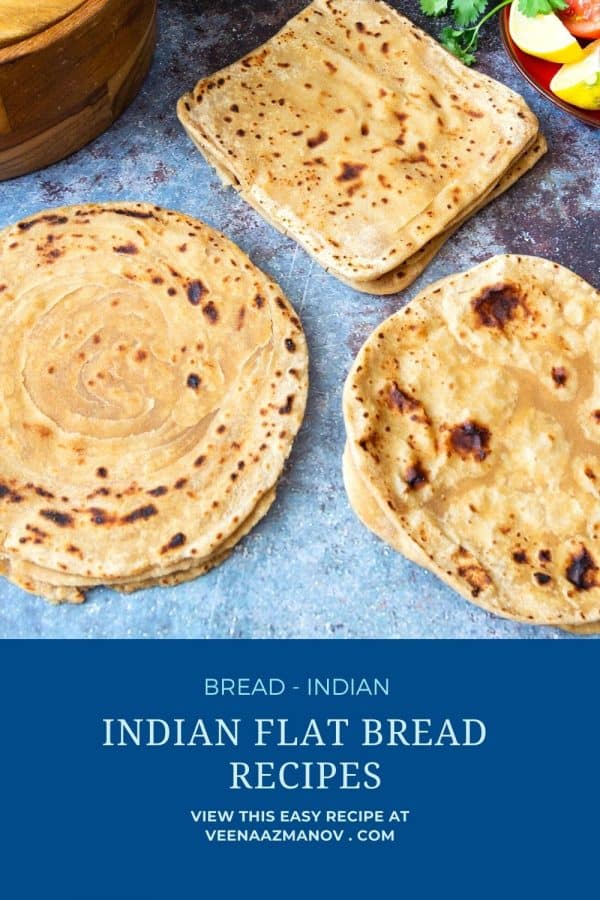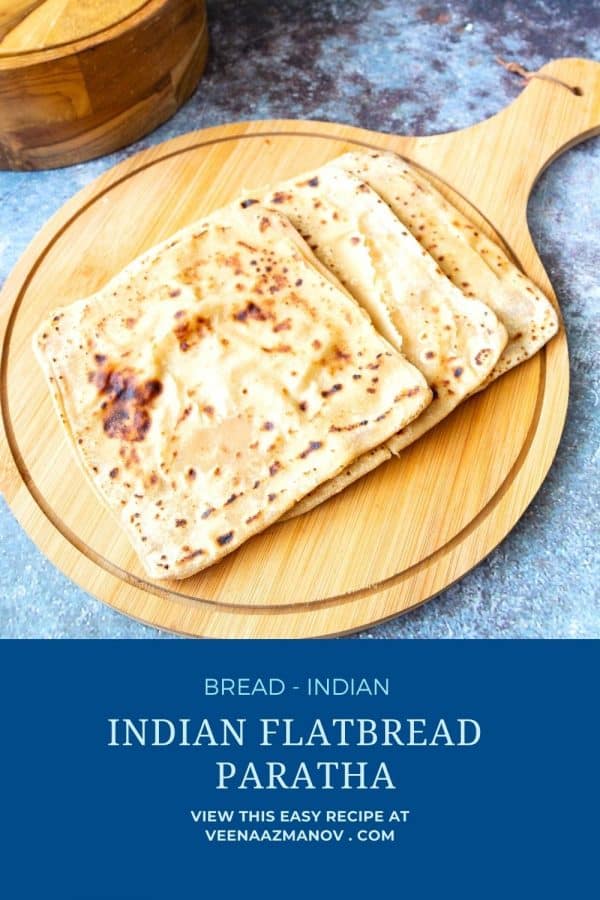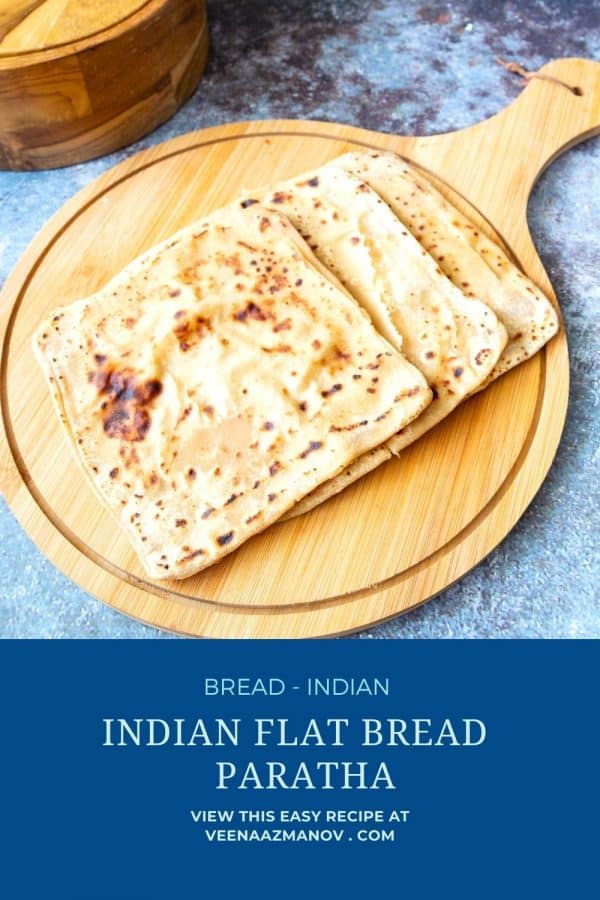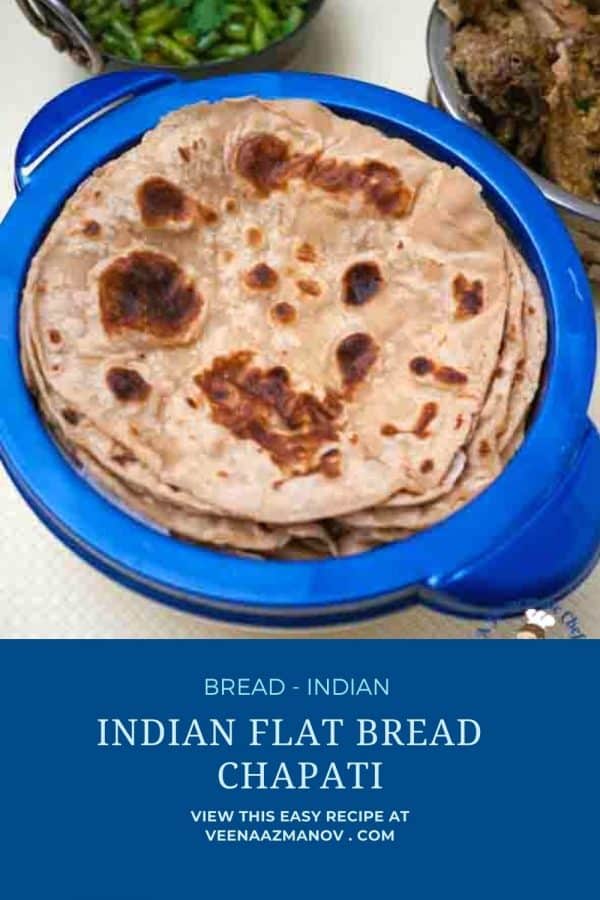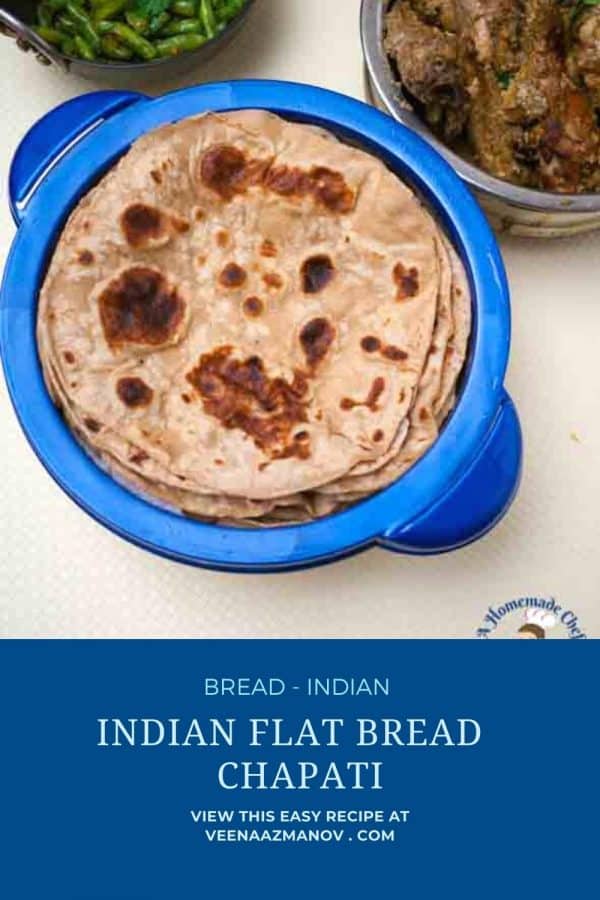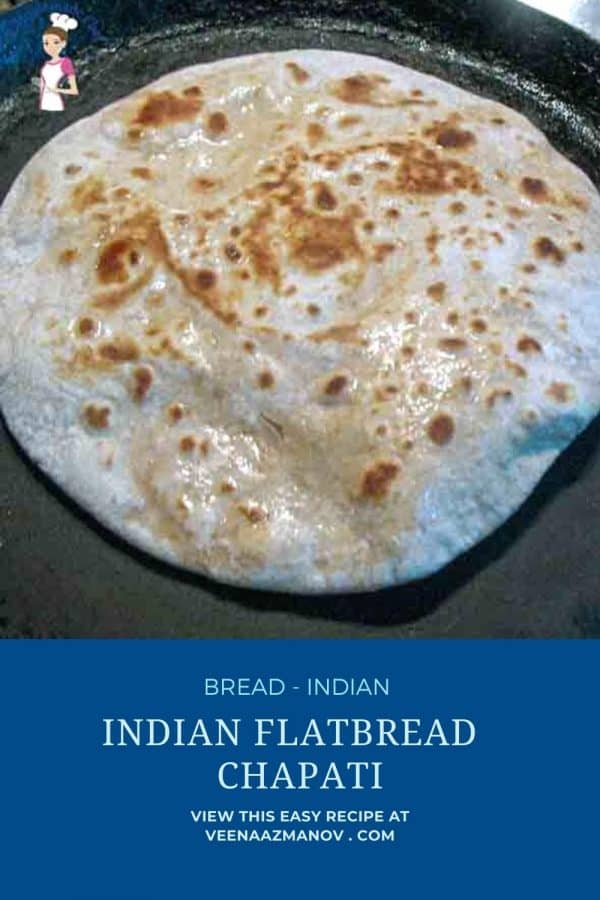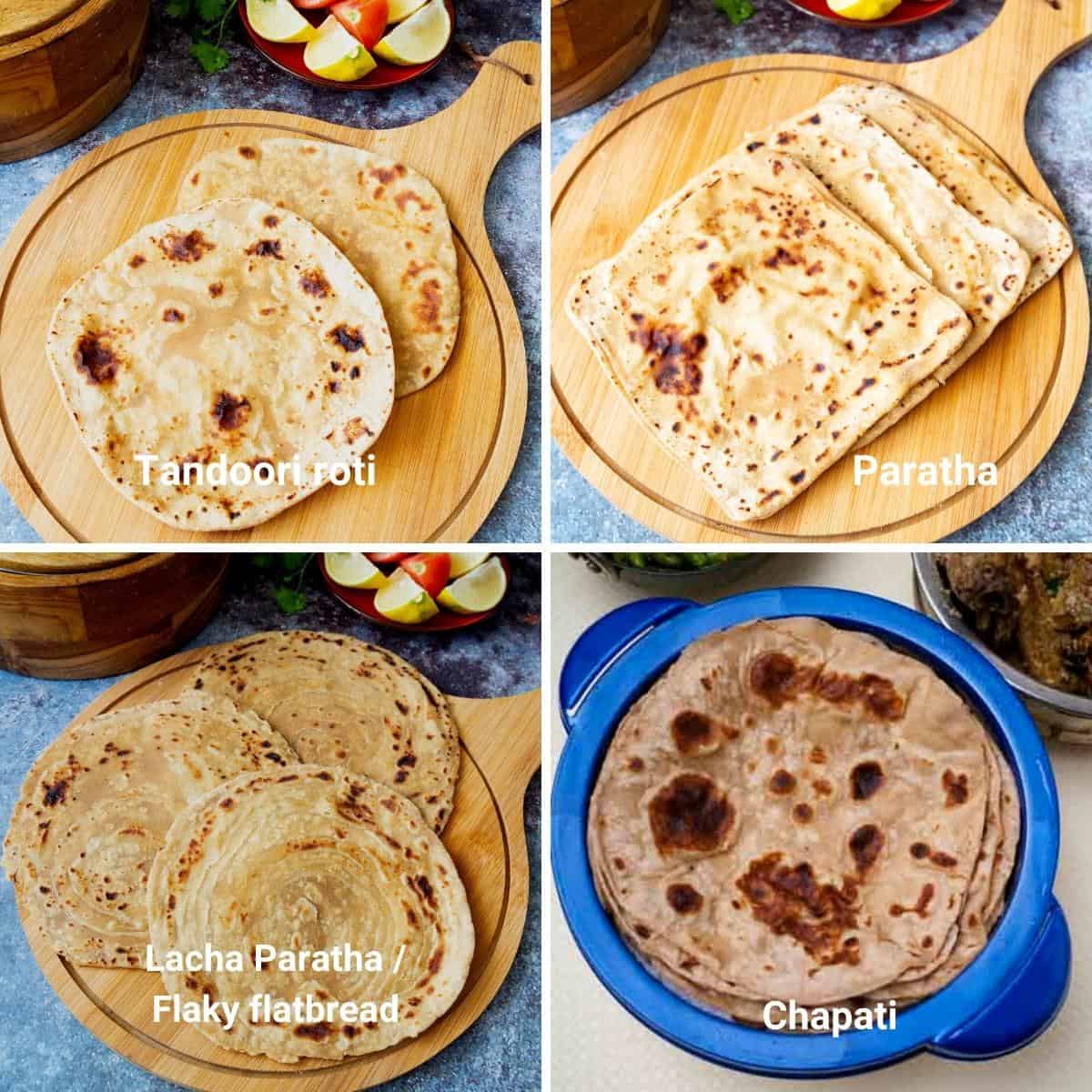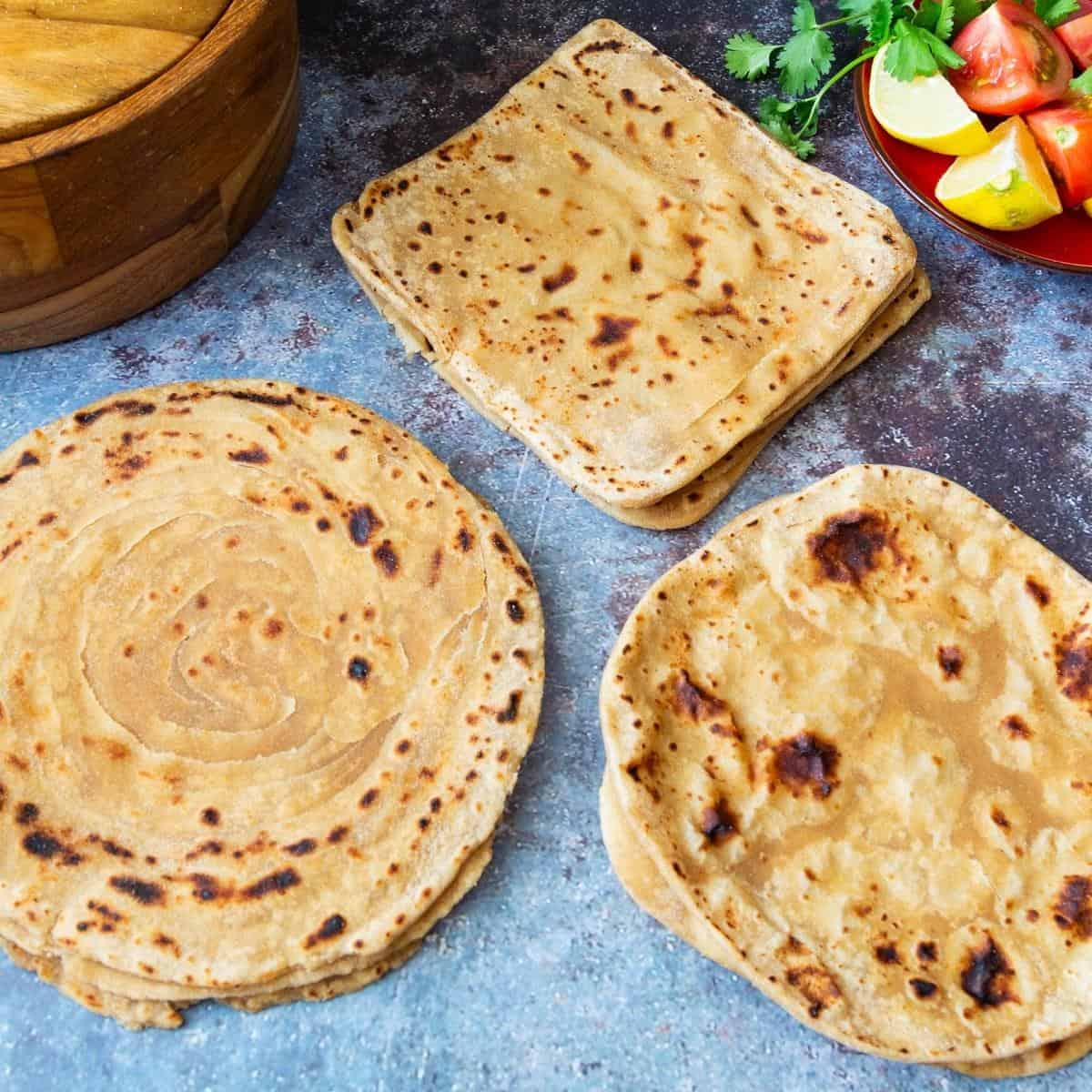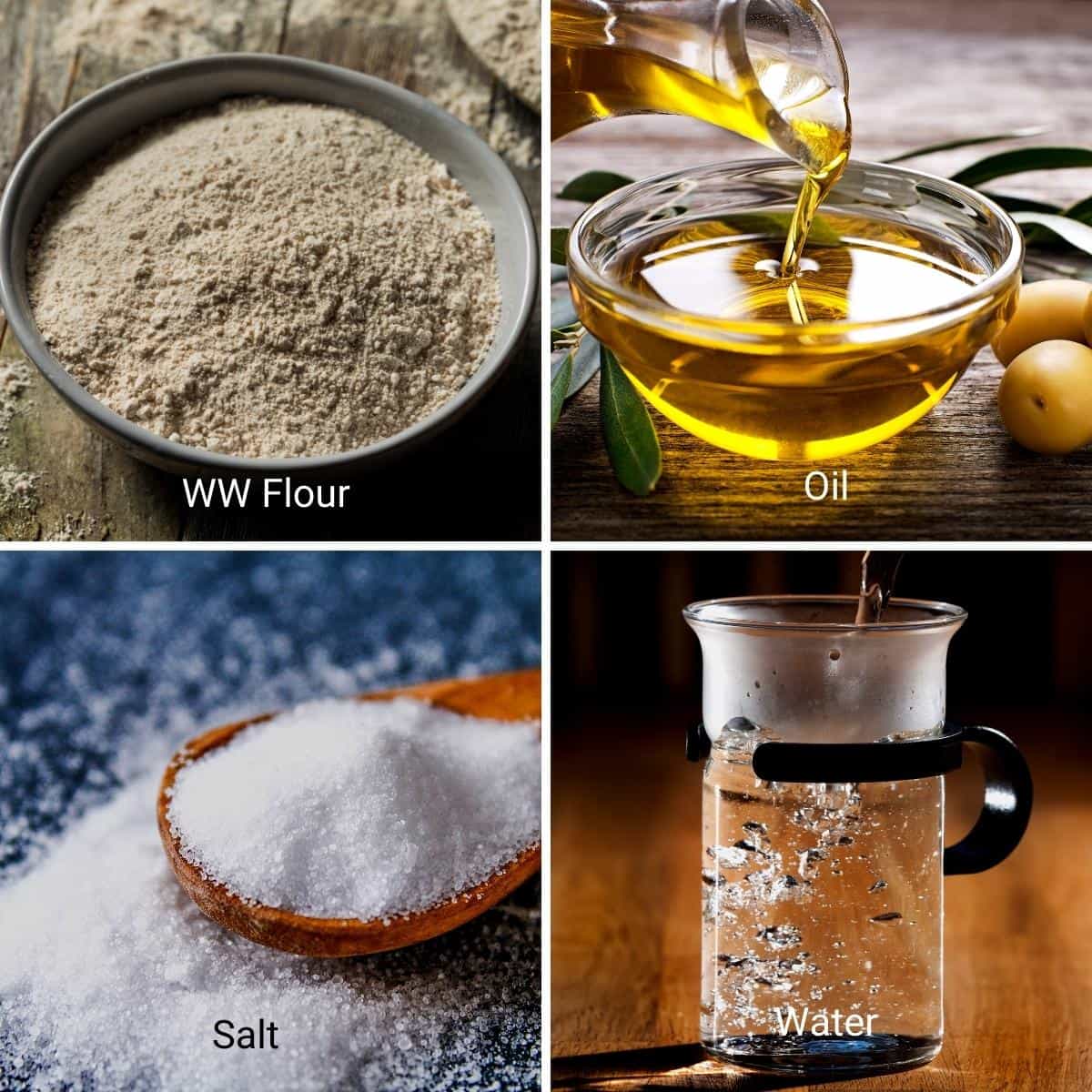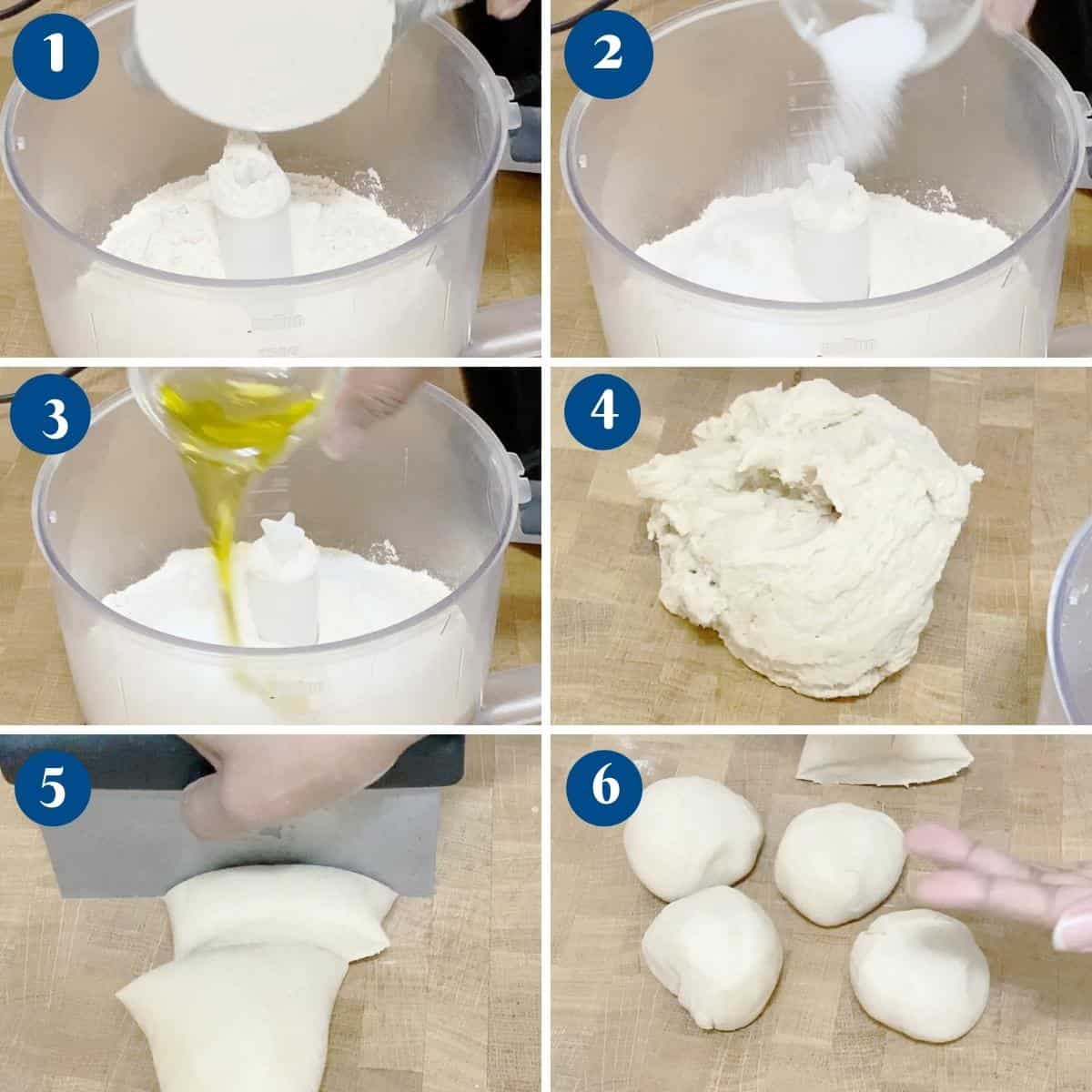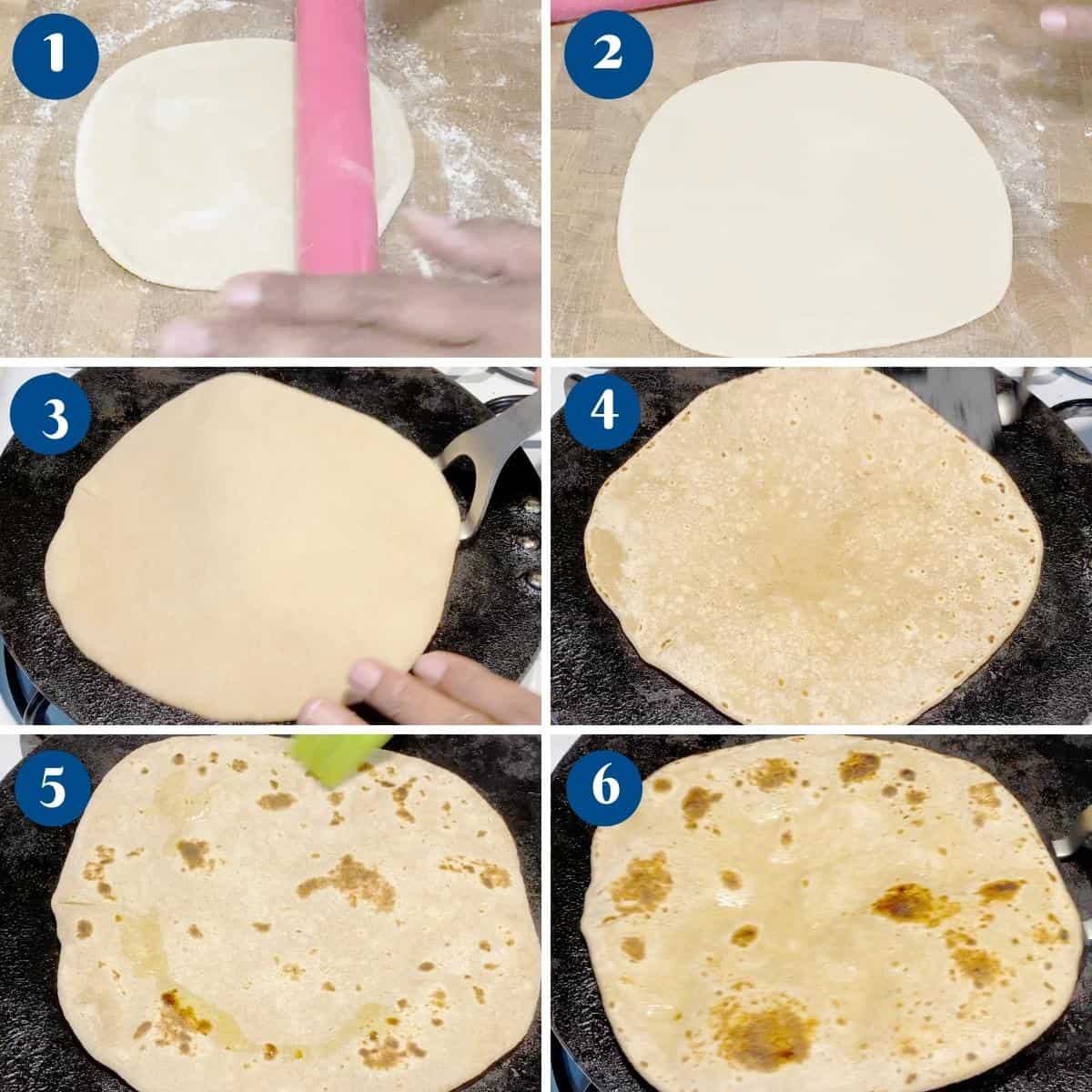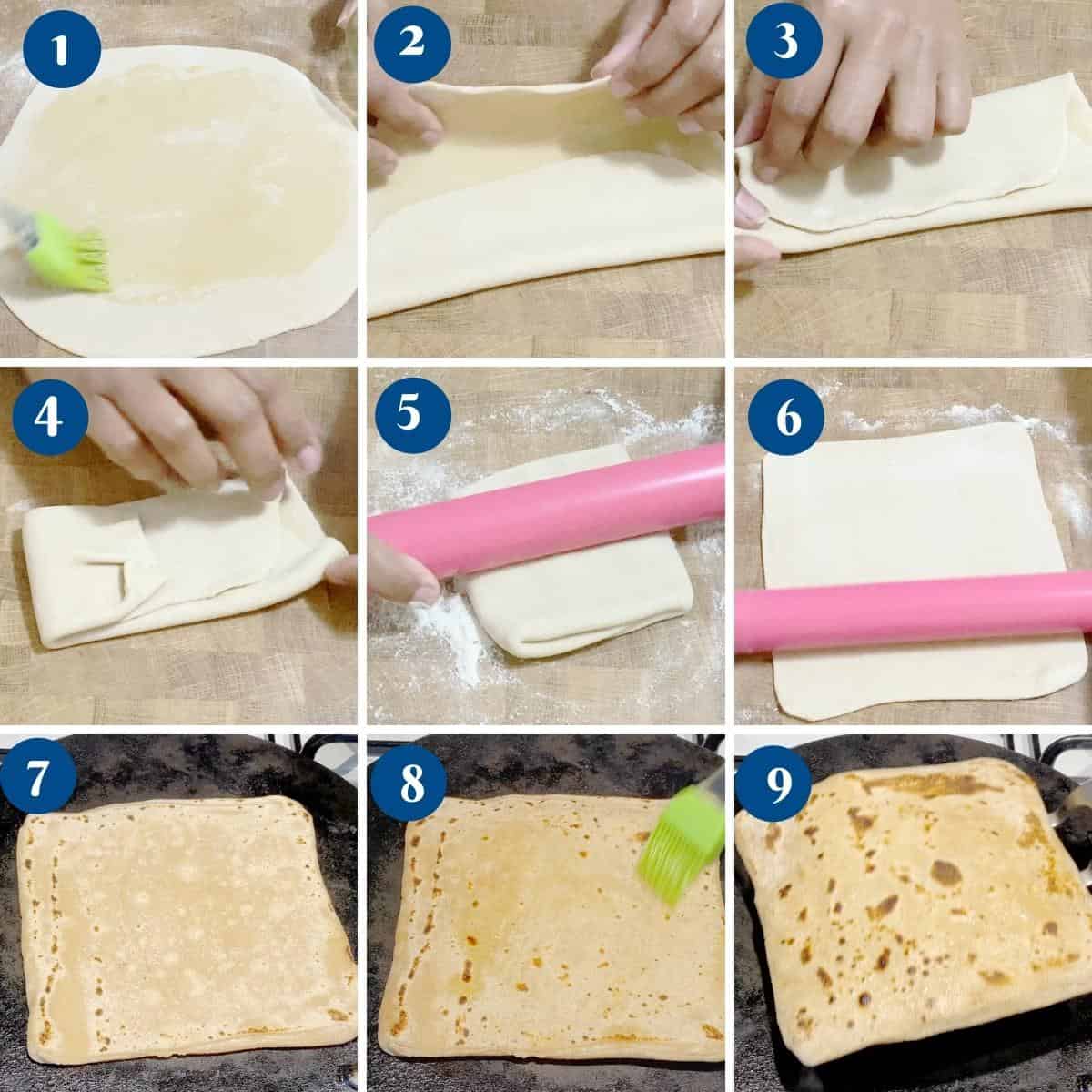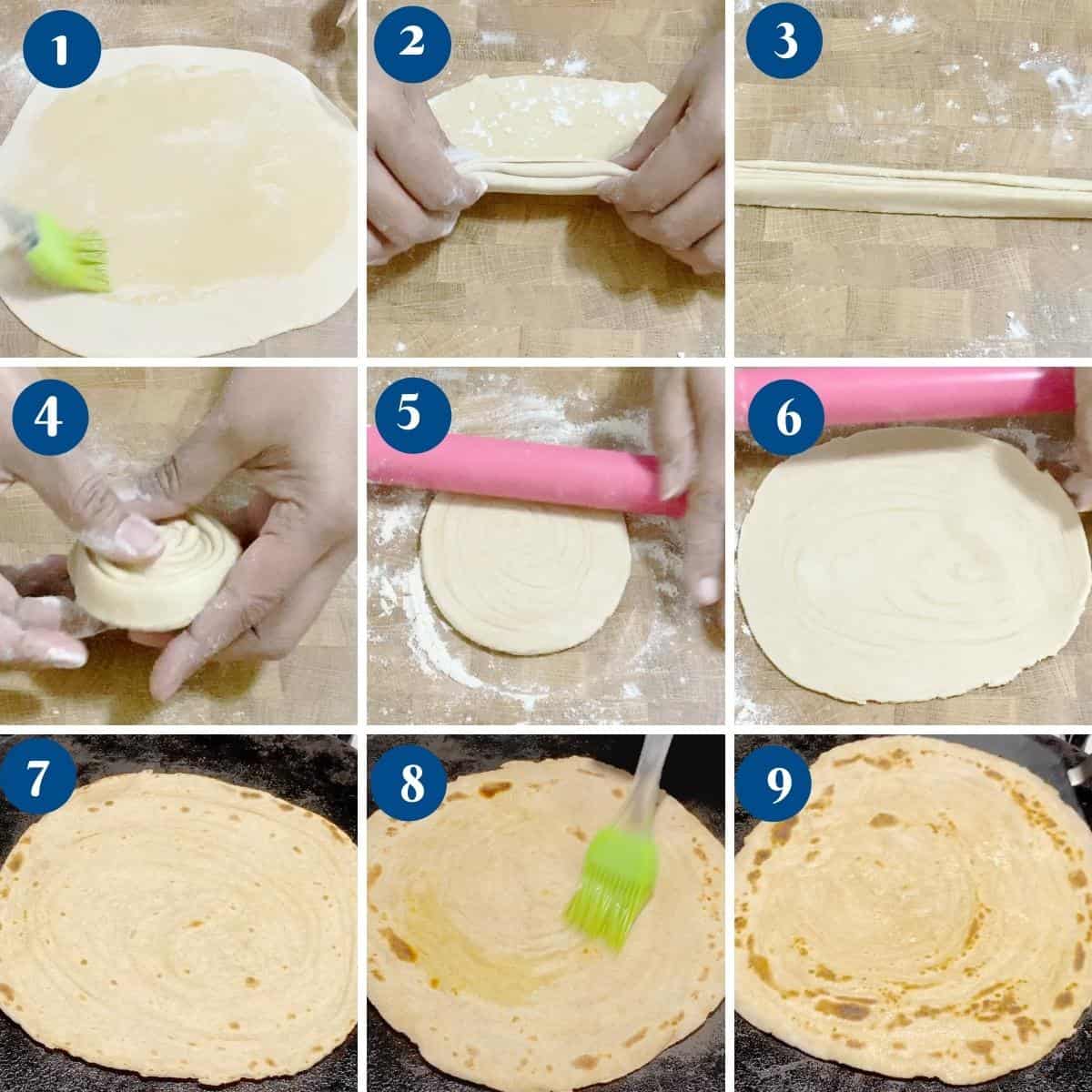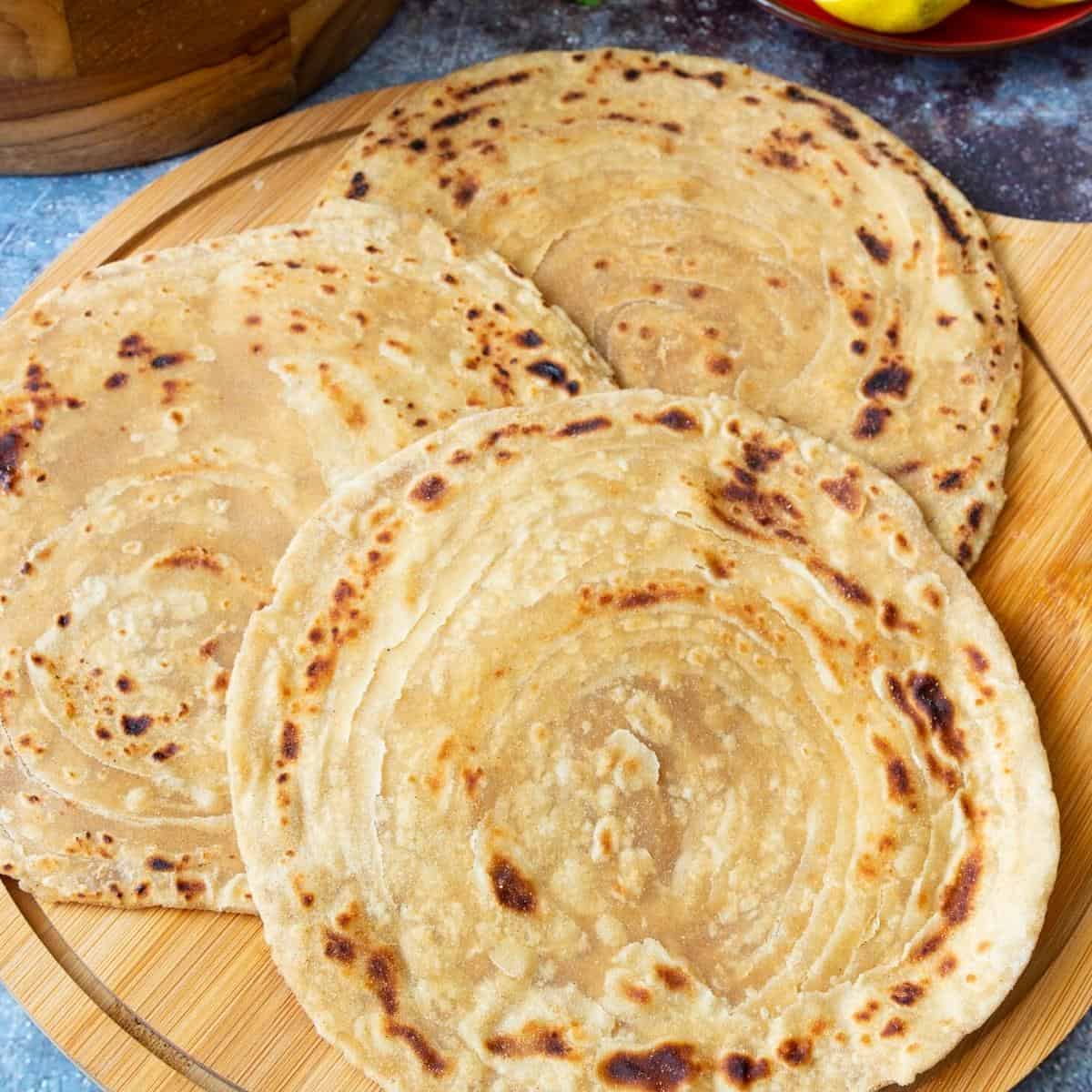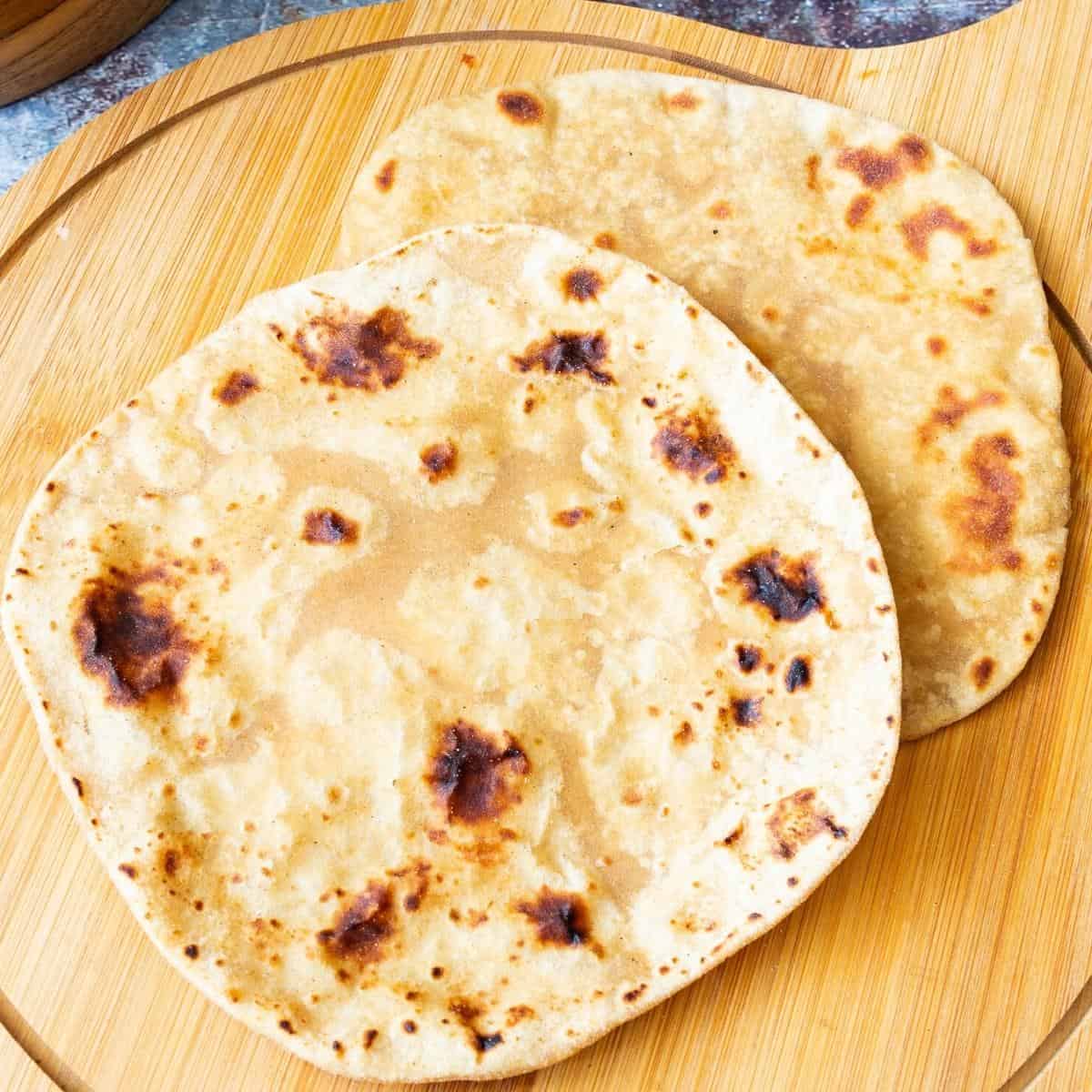Indians probably learned how to make flatbreads from the Persians and Turks. Flatbread recipes are described in Indian texts two thousand years ago. These recipes are very easy to prepare. Also, we use simple ingredients to make them, and they do not require professional bakeware. Most of my non-Indian friends say they want to learn how to make the Indian flatbread. But when you ask them which one, guess what? It’s always so confusing.
Type of Indian flatbreads
Indian flatbread recipes can be yeast-risen, such as naan bread (or garlic butter naan), or the fermented variety such as dosas and appams. And, of course, the easier and quickest ones such as chapati, roti, and parathas. All of these unleavened bread, of course, have their own varieties. Today, I want to share with you 4 flatbread recipes made with just one basic dough. In fact, they are very easy to make, but often sold quite expensive in restaurants.
Chapati is made with wheat flour (or chapati flour). This grind is thinner than whole wheat flour but more wholesome than white flour. It is rolled thinner and is cooked on the tawa, griddle, or skillet. This is the most common staple flatbread made in most Indian homes. Indian roti or tandoori roti is made with whole wheat flour so it is more wholesome. It is rolled thicker and cooked in the clay or tandoor oven (seen in Indian restaurants). But you can also cook it on the skillet as we have done today. Paratha – also made with the same basic dough but is fold into a square shape layered with oil. You can also stuff paratha with a variety of fillings from mashed potato, boiled eggs, mashed peas, spinach and cheese to sweet dry dal. Lacha partha has a different folding method but made similarly to paratha.
Why make homemade flatbreads?
It’s easy and fast. The dough takes only 5 minutes to make. You can make one variety or a few different versions of the flatbread, which looks rather impressive to show off to your guests. Flatbreads are perfect to serve with curry or protein with sauce. Use leftover flatbread to make sandwiches and wraps, such as avocado and chicken, chicken tikka wrap, fish or chicken tandoori wrap.
Ingredients and substitutes
Flour – Indian chapati flour, or as we call it chapati atta, is whole wheat flour that is not as coarsely ground. Of course, you can also use regular whole wheat flour. To get a consistency close to Indian chapati flour, I recommend using 3 cups of whole wheat flour and 1 cup of all-purpose flour. Oil – You can use as little as 1 tablespoon to knead and omit any oil when cooking. I also like a light smear of oil on the cooked chapati as this keeps them soft. On the other hand, you can go liberal with oil, ghee or butter, which is often done in Indian homes. The resulting chapati will be very rich, and of course high in saturated fat. Warm water – It’s not necessary to use warm water, just regular room temperature water. However, I personally recommend using warm water as it softens the gluten and the resulting chapati is soft and supple.
Step-by-step: How to make Indian flatbreads
Dough
In a large bowl, food processor, or bowl of a stand mixer, add flour, salt, and oil. Stir to combine or pulse for a few seconds. Gradually add water while mixing at the same time until you have a soft mixture.Pro tip – Pour water through the feeder of the food processor but do not add too much. Transfer the dough to a lightly floured surface. Knead the dough until smooth and elastic but still soft.Pro tip – You can continue to do the kneading in the food processor or knead in a stand mixer on medium speed until smooth and soft. Cover with a clean kitchen towel or plastic wrap and rest of 10 to 15 minutes.Pro tip – Resting the dough will help the gluten relax and make it easier to roll. Divide the dough into 12 equal pieces. Roll each portion into a ball.
Chapati
Using a rolling pin, roll each ball on a work surface lightly dusted with flour. The disc can be about 8 inches in diameter (approximately). Keep covered under a clean kitchen cloth or cheesecloth to prevent them from drying out.
Indian roti / Tandoori roti
Using a rolling pin, roll each ball on a work surface lightly dusted with flour. The disc can be about 6 inches in diameter (approximately). Keep covered under a clean kitchen cloth or cheesecloth to prevent them from drying out.
Paratha
Using a rolling pin, roll each ball on a work surface lightly dusted with flour. The disc can be about 8 inches in diameter. Brush the dough with oil and fold as shown in the video. Roll again into a square or roll shape to about 6-inches in diameter.Pro tip – Do not roll paratha too thin as it will flatten the layers. You want it to be flaky with cooked.
Lacha Paratha
Using a rolling pin, roll each ball on a work surface lightly dusted with flour. The disc can be about 8 inches in diameter. Brush the dough with oil and fold like an accordion. Then, roll into a coil and make a flat disc as shown in the video. Roll again about 6-inches in diameter.Pro tip – Do not roll paratha too thin as it will flatten the layers. You want it to be flaky with cooked.
Cook
Heat a large skillet, griddle, or cast-iron pan on the stove over medium-high heat. Place the chapati, roti, paratha, or lacha paratha on the hot skillet.Pro tip – Dust off any excess flour first so it does not burn on the pan. Cook for 30 seconds until you see a few bubbles then flip to the other side. Cook another 30 to 45 seconds medium heat. Lightly brush with oil or butter on one side. Gently press with a flat spatula. Turn over and brush the other side. Then, gently press with a flat spatula until light golden-brown spots appear.Pro tip – Pressing with a flat spatula will help cook the parts of the dough that does not get direct heat. This adds nice color and brown spots to the flatbread, which tastes better. Remove the flatbread from the pan and stack them. Store it wrapped in a clean kitchen towel or cheesecloth to keep them soft.Pro tip – Keeping the flatbreads wrapped will ensure they do not dry out.
Tips for success
A soft dough will make soft flatbreads. And a stiff dough will make a stiff, chewy chapati. If your chapati edges are hard or have cracks on the edges – you have made a stiff dough. Leave the kneaded dough on the counter for 10 minutes. Resting the dough will make it easier to work with it. Do not add too much flour to roll it out. Dry flour doesn’t taste good on flatbread and will make them dry. Most Indian women are used to rolling and cooking Indian chapati simultaneously. However, feel free to just roll them out first and then move on to cooking them. Otherwise, you might end up burning a few trying to multi-task. As soon as the flatbread is out of the skillet, wrap it in a clean kitchen cloth. The retaining steam in the chapati is what creates moisture and keeps the chapati soft. Lightly brush some oil with a pastry brush rather than using a spoon. This will give you a light but better coverage unlike a puddle with a spoon.
Sweet Potato Chapati How to make Indian Chapati or Whole Wheat Tortilla Healthy Tortillas Recipe – Best Homemade Tortillas Softest Homemade Naan or Softest Garlic Butter Naan Easy Pita Bread Recipe No-Knead flatbread recipe Potato Flatbread Recipe Easy Soft Flatbread Without Yeast (no-knead)
Frequently asked questions
Variations
Herbed flatbread – Add some chopped up cilantro or mint to the dry flour. It gives freshness of herbs. Spiced flatbraed – Also, add a tbsp of roasted carom seeds or cumin seeds to the dry flour. It adds a smoky flavor. And if you like it spicy, add a little curry powder too. Tomato flatbread – You can also substitute some tomato puree for the water and you have tomato chapatis (great if you trying to get the kids to eat tomatoes). Spinach flatbread – Or, substitute some spinach puree for the water and you have green spinach chapatis (again kid-friendly). Rich flatbread – In addition, you can substitute some yogurt for the milk and the taste is again different richer.
What do you serve with indian flatbreads?
Flatbreads are perfect to serve with curry or protein with sauce. Of course, vegetable sides as well as used as wraps to make a quick snack. See:
Chicken Curry, Slow Cooker Chicken Curry, Instant Pot Chicken Curry Indian Lamb Curry, Slow Cooker Lamb Curry, Instant Pot Lamb Curry Slow Cooked Beef Curry, Beef Mince Curry with Peas Mushroom Masala, Aloo Gobi – Sautéed Cauliflower and Potato Lentil Chicken Curry, Black Beans Curry (Indian Recipe) Butter Chicken, Chickpeas Curry – Channa Masala
Did you LIKE this recipe? Save it for later. You can find my recipes on Pinterest. Follow me on Facebook, Twitter, and Instagram.Subscribe, and I’ll send you new recipes right to your inbox.
Thank you for sharing - Save for later
